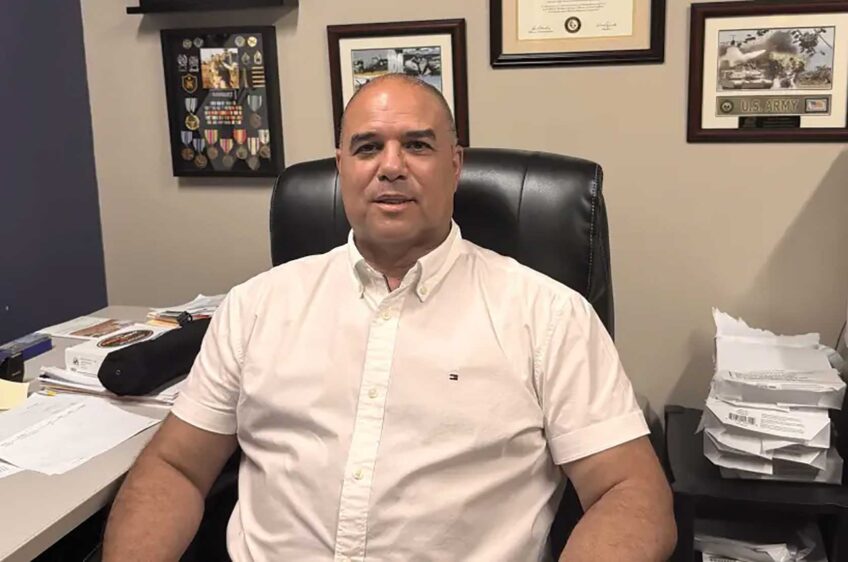Savings in decline as debt on the rise
Credit cards make it easy to carry a balance

It’s extraordinary that in the wealthiest country in the world, 76 percent of the population is broke. As reported in Forbes magazine in January, a nationwide survey revealed that this percentage of Americans has less than $5,000 in the bank. In fact, the same article stated that only 37 percent of Americans have enough savings to pay for a $500 or $1,000 emergency. Year after year, there are numerous studies and articles written about what bad savers Americans are. The magnitude is more of a surprise than the fact that the culture of this country doesn’t display financial prudence. But is having money in the bank necessary in America today? Maybe not.
That 76 percent of Americans have less than $5,000 saved is alarming, but although the average family could be surprised by a bill for $5,000, it’s not a regular occurrence. In most instances, there are safety nets like medical, dental, auto, unemployment and homeowners insurance to help with extraordinary bills. The most common emergency for most Americans likely is a car repair or health insurance deductible falling within the $500-$1,000 expense range. So does this lack of savings mean that many Americans are really one car repair away from bankruptcy?
The annual U.S. bankruptcy filings for the last six years actually show a significant decline in personal bankruptcy filings. The Tax Foundation, which is the nation’s leading independent tax policy research organization, also has found that savings and investment have declined substantially as a percentage of GDP over the last 40 years and collapsed almost entirely since the financial crisis. Why is it that during the same six-year period that bankruptcies have steadily declined, savings and investments as a percentage of GDP also have fallen? The only factor that seemingly can explain this anomaly is the national consumer debt.
The Federal Reserve just released its June 2016 G-19 report, which reveals that as of June 2016 U.S. consumer debt rose 4.1 percent to $3.6 trillion dollars. Of this debt, 26.7 percent or $960.8 billion was credit card debt that had increased 9.7 percent over the previous month. This shows that most Americans not only have access to credit, but the amount being used is growing significantly on a monthly basis. Credit cards and access to revolving debt in and of itself isn’t the issue. The problems arise when spending can’t be cut enough and income can’t be increased enough to pay off that debt in full within a short period of time.
Credit card debt
When confronted with a $500 car repair, $500 in cash savings and $500 of available credit on a credit card appear to be the same. And, if the $500 charge on the card doesn’t push the balance to a high percentage of the credit available and is paid off in full with all other charges on the card at the end of the billing period, the person using the credit card for that car repair actually comes out ahead. He or she may have helped their credit by using it properly and paying it off on time. They may have had more time to pay the $500 so they had use of that money until their credit card bill was due, and if they had a card with no annual fee that offered points or cash back they essentially got a higher interest rate than what they would have gotten even in a high interest savings account. But here’s the caveat: The average American doesn’t pay off credit card balances in full every month. The amount of credit card debt per card-carrying American adult is $5,540. Fox Business News reported that the average credit card debt load for someone who has gone to credit counseling is $24,000 across five cards, and that debt makes up 60 percent of that person’s annual income.
Carrying a balance
Credit card companies make it easy to carry a balance for an extended period of time. They offer flexibility with low minimum payments. Many companies often also offer promotional interest rates that allow those who take advantage of them to carry balances interest-free in hopes that when the promotional period expires, the customer will continue to carry a balance, which will then incur interest and generate a profit for the bank. These promotions and flexible terms are attractive because rather than forcing individuals to cut back on discretionary spending after an unusual expense, they make it easier to keep spending at the same level.
The problem is a lack of awareness about the implications of improper use of this credit. Education around how to use the availability of credit like this as leverage will help build wealth rather than become an obstacle to efficiently creating it.
Lack of savings might lead to bankruptcy or other financial devastation, but poor use of credit followed by unexpected expenses can cause a chain reaction. High use of credit and little cash on hand can cause missed payments, higher interest incurred and lower credit scores, which make it much harder to maximize one’s hard-earned dollars to get ahead financially. Medical emergencies resulting in high unexpected medical bills, job layoffs and divorce may not be everyday occurrences for most Americans, but even one of those, coupled with high use of credit and low savings, may not lead to bankruptcy but will certainly have an impact on their ability to bounce back and thrive financially.
Nicole Peterkin has helped hundreds of clients improve their financial situations using practical advice and a strategy centered around their individual goals and objectives. She believes financial planning isn’t rocket science and regularly speaks to various organizations about personal finance. She is the author of “If You Love Your Family, Save Like It,” which can be found on her website www.nicolepeterkin.com.






